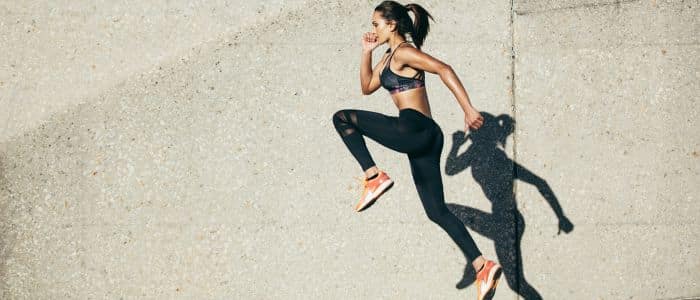
Tips to Resume Exercise after Tummy Tuck
In the world of plastic surgery, tummy tuck is a procedure that can provide immense relief and improved quality of life for many individuals. While the surgery itself is a significant step towards achieving physical comfort and confidence, post-operative care plays an important role in ensuring a successful recovery. One important aspect of this care is knowing when and how to reintroduce exercise into your routine after tummy tuck surgery.
In this blog, Chester Consultant Plastic Surgeon Anca Breahna will explore the importance of exercise after tummy tuck surgery, the recovery process, and when you can safely start engaging in physical activities.
Download the Tummy Tuck Guide

Importance of Exercise after Tummy Tuck Surgery
Tummy tuck surgery can be a life-changing procedure for many women. It not only addresses physical discomfort but can also have a significant impact on emotional well-being and self-confidence. But achieving the best results and maintaining long-term benefits require diligent post-operative care, and one of the most crucial components of this care is exercise.
Exercise, when approached thoughtfully and gradually, can offer a range of benefits for individuals recovering from tummy tuck surgery. Here are some reasons why exercise is important in the post-operative period:
- Promotes Circulation and Healing: After surgery, blood circulation is essential for the delivery of oxygen and nutrients to the healing tissues. Gentle movements and exercise help improve circulation, which can aid in the healing process and reduce the risk of complications
- Prevents Muscle Weakness: Prolonged inactivity can lead to muscle atrophy (weakening). Regular, controlled movements and exercises can help maintain muscle strength and tone
- Enhances Lymphatic Drainage: Exercise can stimulate lymphatic flow, helping to reduce swelling, which is common after tummy tuck surgery
- Boosts Mood and Mental Well-being: Engaging in appropriate physical activity can release endorphins, the body’s natural mood elevators, which can alleviate post-surgical emotional stress and improve overall mental well-being
- Supports Long-Term Results: Maintaining a healthy and active lifestyle after tummy tuck surgery can help preserve the results achieved by the procedure. It can prevent weight gain and changes that may occur with significant fluctuations in body weight.
How Is the Recovery Process after Tummy Tuck Surgery?
The recovery after tummy tuck surgery is a process marked by distinct phases, each requiring careful attention and patience. Understanding these phases will help you make informed decisions about when and how to incorporate exercise into your post-operative routine:
- Initial Healing Period: In the first few days following your surgery, your body will be focused on healing the surgical incisions and controlling initial swelling. During this phase, rest is important, and any form of strenuous activity, including exercise, should be strictly avoided. Anca will provide instructions on wound care and any necessary medications
- Managing Discomfort: The days immediately following surgery may be uncomfortable, and you’ll likely experience some pain and swelling. Anca will prescribe pain medication to manage this discomfort. As you progress through this phase, gentle movements and deep breathing exercises can help prevent stiffness and improve lung function
- Stitches and Dressings: Your surgical incisions will be closed with stitches or surgical glue. Anca will advise you on when to return for a follow-up appointment to assess your healing progress and potentially remove stitches. During this time, it’s important to protect the incision sites from excessive movement and pressure
When Can I Start Engaging in Light Physical Activities?
The initial healing phase, lasting for the first week or two, must be dedicated to rest and minimal physical activity. As you progress through the recovery process, there will come a point when you can safely begin incorporating light physical activities into your routine. The timing of this transition will vary from person to person and will depend on Anca’s recommendations and your individual healing progress.
Here are some general guidelines for when you can start engaging in light physical activities:
- Walking: Gentle walking can often be resumed within the first week after surgery, but start slowly and limit the duration initially. Pay attention to your body’s signals, and if you experience pain or discomfort, reduce your activity level
- Household Chores: Light household chores, such as preparing simple meals or doing light cleaning, can be gradually reintroduced after the first week. Be cautious not to overexert yourself
- Driving: Your ability to drive may be limited initially due to discomfort and the use of pain medication. Anca will advise you on when it’s safe to resume driving
- Work: The timing of your return to work will depend on the physical demands of your job. Office-based work may be resumed after a couple of weeks, while physically demanding jobs may require a more extended period of rest
It’s important to emphasise that any physical activity during this phase should be performed with care and within the limits advised by Anca. Pushing too hard too soon can hinder the healing process and potentially lead to complications.
Gradually Introducing Exercise into Your Post-Operative Routine
As you progress through the initial healing phase and gain Anca’s approval, you can gradually introduce more structured exercise into your post-operative routine. It’s essential to proceed with caution and prioritise safety. Here’s how you can do it:
- Consult Your Surgeon: Before embarking on any exercise regimen, consult with Anca. She will assess your healing progress and provide specific recommendations tailored to your individual case
- Start Slowly: Begin with light, low-impact activities, such as gentle stretching and range of motion exercises. These activities help prevent stiffness and improve flexibility without straining your incisions
- Listen to Your Body: Pay close attention to how your body responds to exercise. If you experience pain, discomfort, or excessive fatigue, stop immediately and consult Anca. Your body will provide valuable feedback on what it can handle at each stage of recovery
- Avoid High-Impact Exercises: High-impact activities, such as running or jumping, should be avoided during the early stages of recovery. These activities can place stress on your healing tissue and potentially lead to complications
Gradually reintroducing exercise into your routine is an important step toward regaining your strength and overall well-being after tummy tuck surgery.
Low-Impact Exercises after Tummy Tuck Surgery
Low-impact exercises are particularly valuable during the early stages of post-operative recovery after tummy tuck surgery. These activities provide a way to engage in physical activity without placing excessive strain on your healing tissue. Here are some low-impact exercises that can support your healing process:
- Walking: Walking is a low-impact exercise that can be started early in your recovery journey. Begin with short, leisurely walks and gradually increase both the duration and intensity as you feel more comfortable. Wearing the compression garments is essential for added comfort and stability during walks
- Swimming: Once your surgical incisions have fully healed and you’ve received clearance from Anca, swimming can be an excellent low-impact exercise. The buoyancy of the water reduces the impact on your body while providing a full-body workout. Ensure that you avoid swimming pools with high chlorine levels, as it can irritate incisions
- Stationary Cycling: Using a stationary bike is another low-impact way to improve cardiovascular fitness and leg strength. Start with a slow pace and minimal resistance, gradually increasing both as your body allows
- Tai Chi: This ancient Chinese martial art promotes balance, coordination, and relaxation through slow, flowing movements. Tai Chi is gentle on the body and can be beneficial for improving overall well-being
Remember that it’s essential to start these low-impact exercises gradually and with the approval of your surgeon. Focus on maintaining proper form and listening to your body’s cues. If you experience any discomfort or pain during these activities, stop immediately and consult Anca’s team.
Stretching after Tummy Tuck Surgery
In addition to low-impact exercises, gentle stretching and range of motion exercises are essential components of your post-operative recovery routine. These exercises can help prevent stiffness, improve circulation, and promote the healing process. Here are some examples:
- Arm Circles: Stand or sit comfortably and slowly rotate your arms in a circular motion. This exercise helps maintain shoulder flexibility without placing strain on your chest
- Neck and Shoulder Rolls: Gently roll your shoulders forward and backward and perform slow neck rolls to relieve tension in the upper body
- Deep Breathing Exercises: Practicing deep breathing exercises can help prevent lung congestion and maintain lung function. Inhale deeply through your nose, hold for a few seconds, and exhale slowly through your mouth
- Wall Climbing: Stand facing a wall, place your hands on the wall, and gently climb your fingers up and down, keeping your arms straight. This exercise improves shoulder mobility and flexibility
- Wrist and Ankle Circles: Rotate your wrists and ankles in circular motions to improve joint mobility and prevent stiffness
These gentle exercises can be performed multiple times a day to keep your body moving and aid in your recovery process. Always follow Anca’s recommendations regarding the timing and extent of these activities to ensure your safety.
How Incorporate Cardiovascular Exercise into Your Routine
Cardiovascular exercise, also known as aerobic exercise, is essential for overall fitness and well-being. But it’s crucial to approach cardiovascular exercise with caution and gradually integrate it into your post-operative routine.
Here’s how to safely incorporate cardiovascular exercise after tummy tuck surgery:
- Consult Your Surgeon: Before starting any cardiovascular exercise program, consult with Anca. She will assess your healing progress and provide specific guidelines based on your individual case
- Start Slowly: Begin with low-intensity cardiovascular activities, such as walking or cycling on flat terrain. Keep the duration and intensity modest initially
- Monitor Your Heart Rate: Pay attention to your heart rate during exercise. Aim for a moderate intensity level, typically 50-70% of your maximum heart rate, to ensure you’re not pushing your body too hard
- Stay Hydrated: Proper hydration is crucial during cardiovascular exercise. Drink water before, during, and after your workout to prevent dehydration
- Listen to Your Body: If you experience any discomfort, shortness of breath, or chest pain during exercise, stop immediately and seek medical attention. Your body will provide valuable feedback on what it can handle at each stage of recovery
- Gradually Increase Intensity: As your body becomes more accustomed to cardiovascular exercise, you can slowly increase the intensity and duration of your workouts. Always prioritise safety and avoid overexertion
- Choose Low-Impact Options: Opt for low-impact cardiovascular exercises, such as swimming, stationary cycling, or using an elliptical machine
When Can I Begin Weightlifting after Tummy Tuck?
While low-impact exercises and cardiovascular workouts are important components of your post-operative routine, many individuals also wonder when they can safely start weightlifting or resistance training after tummy tuck surgery. Building strength and stamina can enhance your overall well-being, but it’s essential to approach this type of exercise with care.
Here’s a guideline for incorporating weightlifting into your post-operative routine:
- Consult Your Surgeon: Before you begin any weightlifting or resistance training program, consult with Anca. She will assess your healing progress and provide specific recommendations based on your individual case
- Start with Light Weights: When you receive clearance from your surgeon, begin with very light weights or resistance bands. Focus on high repetitions with low resistance to avoid straining your chest muscles
- Prioritise Proper Form: Proper form is crucial to prevent injury and minimise strain on your healing tummy tissue. If you’re new to weightlifting, consider working with a certified personal trainer who can provide guidance on technique
- Avoid Tummy-Specific Exercises Initially: To protect your surgical site, avoid tummy-specific exercises for a more extended period. Focus on working other muscle groups, such as legs, chest and arms
- Progress Gradually: As your strength and stamina improve, you can gradually increase the weight or resistance level. Always prioritise a slow and steady progression to prevent injury
- Listen to Your Body: Pay close attention to how your body responds to weightlifting. If you experience pain, discomfort, or unusual sensations around your surgical site, stop immediately and consult Anca
- Warm-Up and Cool Down: Before and after each weightlifting session, include warm-up and cool-down exercises to prepare your muscles for the workout and promote flexibility
- Stay Hydrated: Adequate hydration is essential during weightlifting workouts to prevent muscle cramps and maintain overall well-being
Remember that the timing for incorporating weightlifting into your routine may vary from person to person, so it’s vital to follow Anca’s guidance closely. The goal is to rebuild strength and stamina gradually while safeguarding your healing process.
FAQs about Exercise after Tummy Tuck Surgery
When can I resume swimming or water-based activities?
- Swimming or engaging in water-based activities can be an excellent low-impact exercise option post-tummy tuck surgery. However, it’s essential to wait until your surgical incisions have fully healed and you’ve received clearance from Anca. Typically, this can take several weeks or even a few months. Ensure that the water you’re swimming in is clean and free from any potential contaminants that could irritate your incisions.
Are there specific exercises to avoid indefinitely after tummy tuck surgery?
- While most exercises can be incorporated into your routine as you heal, some high-impact or strenuous activities should be approached with caution or avoided for a longer time to protect your tummy tuck results. Exercises and activities that place excessive strain on your tummy muscles should be discussed with Anca and may need to be restricted to prevent complications.
How soon can I return to high-impact or more vigorous exercise routines?
- The timing for returning to high-impact or vigorous exercise routines varies from person to person and depends on your individual healing process. Anca will provide specific guidelines and clearances based on your progress. In most cases it can take several months before you can safely engage in high-impact activities like running or intense weightlifting. Prioritise gradual progression and always listen to your body to avoid overexertion and potential complications during your recovery journey.
Further Reading about Tummy tuck Surgery with Consultant Plastic Surgeon Anca Breahna
- Read more about Mini Tummy Tuck Vs Full Tummy Tuck
- Read more about Tummy Tuck after a C Section
- Read more about Liposuction vs Tummy Tuck
- Read more about How Much Weight Can You Lose With A Tummy Tuck?
- Read more about Best Compression Garments after Tummy Tuck Surgery
- Read more about How Much Is a Tummy Tuck in the UK?
Medical References about Tummy tuck Surgery
- Tummy tuck – Mayo Clinic
- Tummy Tuck: What to Expect at Home – My Health Alberta
- What you need to know about your tummy tuck recovery – American Society of Plastic Surgeons
- Tummy tuck recovery: Timeline and tips – Medical News Today
- A systematic review of outcomes of abdominoplasty



 Ms Anca Breahna, PhD, MSc, FEBOPRAS, FRCS (Plast) is a highly regarded Consultant Plastic Surgeon specialising in the field of Aesthetic and Reconstructive Plastic Surgery. Anca performs a range of
Ms Anca Breahna, PhD, MSc, FEBOPRAS, FRCS (Plast) is a highly regarded Consultant Plastic Surgeon specialising in the field of Aesthetic and Reconstructive Plastic Surgery. Anca performs a range of 